Do you have any idea about which country is the largest milk producer in the world? The answer is- India! Yes, our country produces over 87,450 metric tons of milk annually per Consumer Goods & FMCG data. All the credit goes to flourishing Dairy farming businesses in India! Are you looking to open a dairy farm too? If so, you need a solid dairy farming business plan.
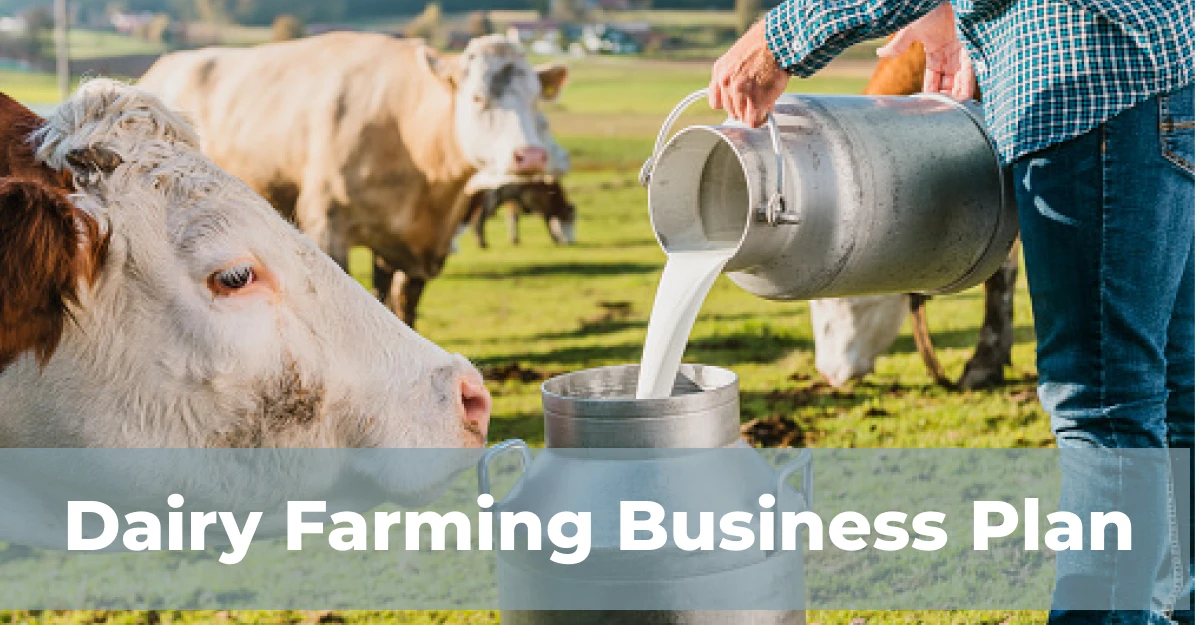
Here we’re presenting you with a thorough business plan for dairy farming. Whether you are a beginner or looking for farm expansion, this plan will definitely help you.
We have divided the dairy farming business plan into 12 parts and explained them step by step. Here’s how it goes-
1. Professional Training
First of all, you need to become familiar with the environment of dairy farming and obtain the required skills. After all, the dairy farming business is no less than a job. It is one of the most profitable occupations, especially in North India.
So, to gain enough skill, knowledge, and experience you can enroll yourself in training programs from legit or affiliated institutes like-
- Agricultural Universities
- Training Centres of Animal Husbandry Department
- Krishi Vigyan Kendras
- Private Training Dairy Industries
2. Get a License
In India, different states have different rules and regulations. Hence, you need a license. But in villages, almost every household has a cow/buffalo. Do all of them have a license? You may ask. Well, not really. For instance, as per the Rajasthan Government, anybody can rear a cow and a calf without any license. But if you are planning for a dairy farming business then definitely you need a license.
Because, rearing a cow/buffalo for milk consumption is a basic amenity whereas rearing them for business to earn profits is an entirely different concept. That’s why you need to adhere to government regulations.
Hence, you must get a license from FSSAI otherwise you may be imposed with a fine and imprisonment.
3. Capital Investment
From a general perspective, you need to invest around Rs.10-20 lakh for rearing 20 animals considered as medium or large-scale dairy.
Indeed it is a large amount for ordinary Indians, therefore, you can apply for a subsidy or loan from cooperative banks.
4. Selection of Dairy Type
First, decide how many animals you want to start with. This will determine the scale of your dairy farm. Here are three categories-
- Small-Scale Dairy: You can start with up to 5 cattle. This is a good option if you’re just beginning and want to manage a small, manageable number of animals.
- Medium-Scale Dairy: This involves keeping 6 to 20 cattle. This scale requires more resources and time but can produce more milk and generate higher income.
- Large-Scale Dairy: Here, you’ll have more than 20 cattle. Managing a large-scale dairy farm involves a significant investment, more land, and labor, but it also has the potential for substantial milk production and profits.
5. Breed Selection
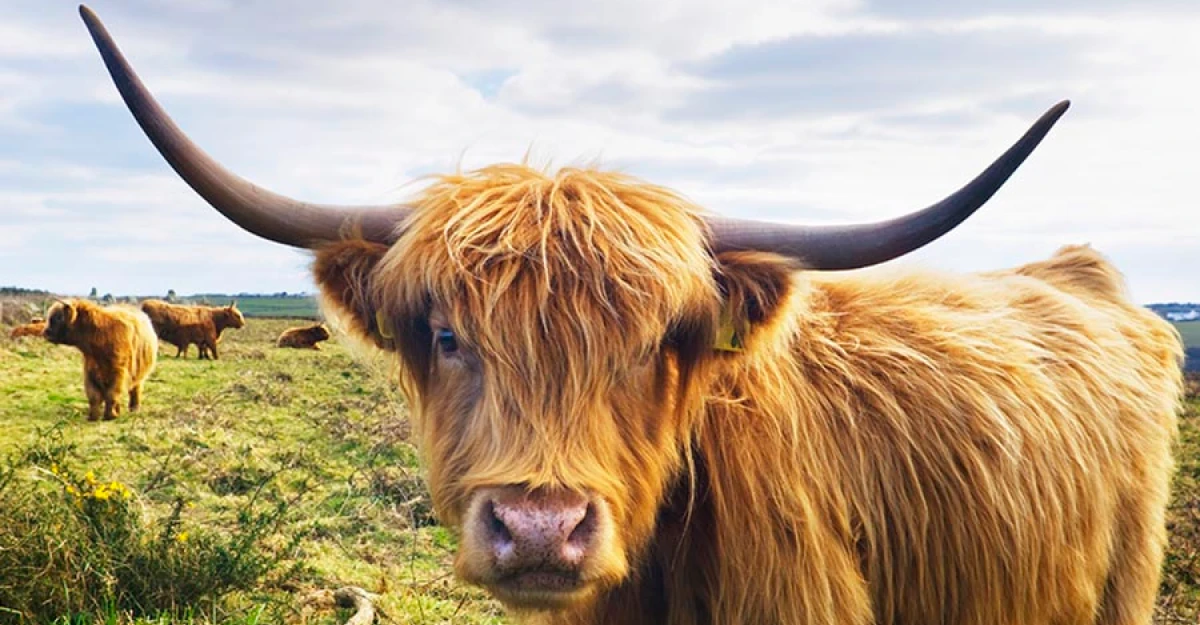
Choosing the right breed is crucial for good milk yield. Here are some of the best breeds for milk production-
- Jersey: Jerseys are small, gentle cows that are excellent for milk production. They produce milk with high butterfat content, which is great for making cream and butter.
- Red Sindhi: Known for their hardiness and adaptability to hot climates. They produce a good quantity of milk and are easy to manage.
- Holstein Friesian (HF Cows): Holsteins are the most common dairy breed worldwide. They are large cows that produce the highest quantity of milk compared to other breeds.
- Sahiwal: Sahiwal cows are known for their resistance to diseases and adaptability to harsh conditions. They produce a moderate amount of high-quality milk.
- Gir: Girs are native to India and are known for their robust health and good milk production. Their milk has high nutritional value.
- Deoni: Deoni cows are hardy and can thrive in various conditions. They are good milk producers and require less maintenance.
- Ongole: Ongole cows are strong and can adapt well to different environments. They are moderate milk producers but are known for their strength and endurance.
6. Location of the Farm
Choosing the right location for your dairy farm is vital for the health of your cattle and the efficiency of your operation. Here’s what you need to know-
- Land Requirement: For 15 cows, you ideally need 2 acres of land. This amount of land provides enough space for grazing, shelter, and other necessary facilities. It also allows for proper waste management and reduces the risk of disease.
- Accessibility: Make sure your farm is easily accessible for transportation of milk to markets and for bringing in feed and other supplies. Proximity to veterinary services is also important for the health of your cattle.
- Water Supply: Ensure there is a reliable and clean water source. Cows need plenty of water for drinking and for maintaining hygiene on the farm.
- Climate: Consider the climate of the area. Different breeds adapt better to different climates, so choose a location that suits your selected breed.
By carefully planning these aspects, you can set up a successful dairy farm that produces high-quality milk and ensures the well-being of your animals.
7. Enough Fodder and Water for the Cattle
To produce high-quality milk with good fat content, your cattle need a balanced diet and plenty of water. Go through the following table for detailed information-
| Type of Food & Nutrition | What is it? | Why is it important? | How much? |
| Dry Fodder | Dry fodder includes hay, straw, and dried grasses. | It provides essential fiber that aids in digestion and keeps your cattle healthy. | Each cow needs about 8-10 kg of dry fodder per day. Ensure it’s always available to keep them satisfied and productive. |
| Green Fodder | Green fodder includes fresh grass, maize, and other green plants. | It’s rich in vitamins and minerals, essential for good milk production. | Each cow needs about 25-30 kg of green fodder per day. Growing green fodder on your farm can ensure a constant supply and reduce costs. |
| Feed Concentrate | Concentrates are high-nutrient supplements like grains, oilseeds, and commercial dairy feed. | They provide extra nutrition that boosts milk yield and improves milk quality. | Each cow needs about 2-3 kg of concentrate per day. Adjust the amount based on the cow’s milk production and health needs. |
| Water | Ensure there’s a constant supply of clean, fresh water. Regularly check water troughs and clean them to prevent contamination. | Cows need a lot of water to produce milk. | Up to 60 liters per day. |
8. Anticipate the amount of Milk Production
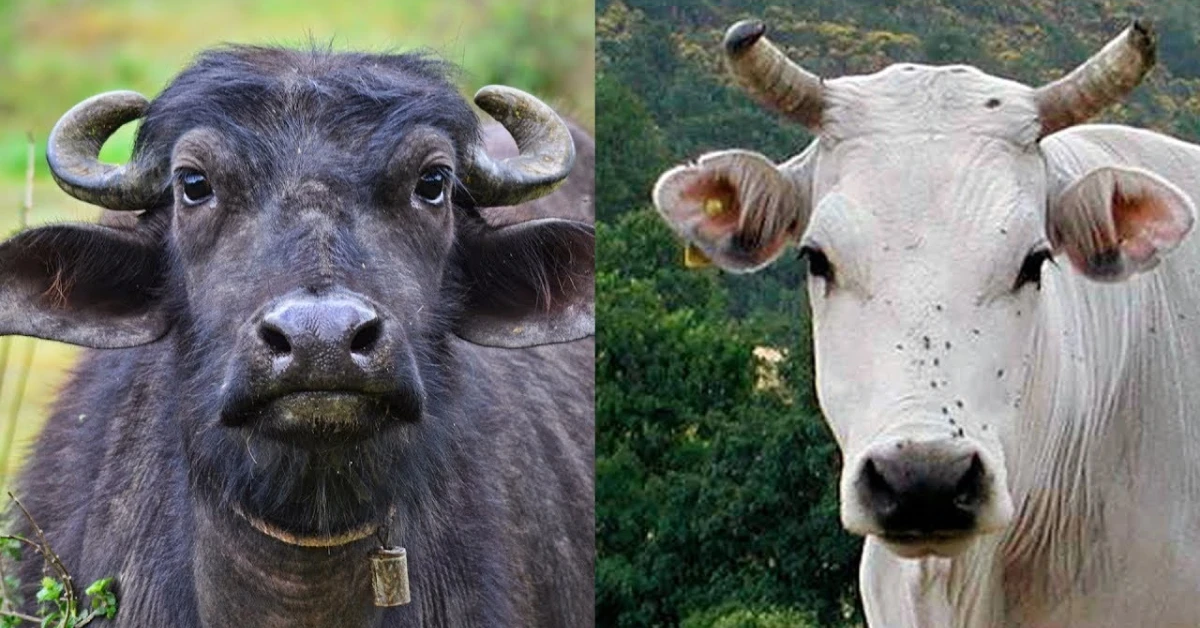
Understanding how much milk your cattle can produce helps you plan your resources and manage your farm effectively.
- Factors affecting production: Breed, nutrition, health, and management practices all impact milk yield.
- Estimate Yield: On average, a good dairy cow can produce 10-15 liters of milk per day. Some high-yielding breeds like Holstein Friesians can produce even more.
9. Labor
Running a dairy farm involves various tasks that require adequate labor. Here’s what you need to consider-
Handling Farm Activities
- Daily Tasks: Feeding, milking, cleaning, and monitoring the health of your cattle.
- Number of Workers: For a medium-scale dairy (6-20 cattle), you might need 2-3 workers to manage these activities efficiently.
Growing Green Fodder
- Significance: Ensuring a steady supply of green fodder reduces feed costs and provides fresh nutrition for your cattle.
- Labor Needs: You’ll need workers to plant, water, and harvest green fodder. This task requires regular attention, especially during growing seasons.
Training
- Importance of Training: Proper training ensures that workers can handle cattle safely, perform milking correctly, and maintain hygiene standards.
- Training Duration: A few days of hands-on training can significantly improve efficiency. Train your workers on- Milking techniques to maximize yield and maintain udder health; Feeding practices to ensure a balanced diet; and Recognizing signs of illness to address health issues promptly.
10. Veterinary Care
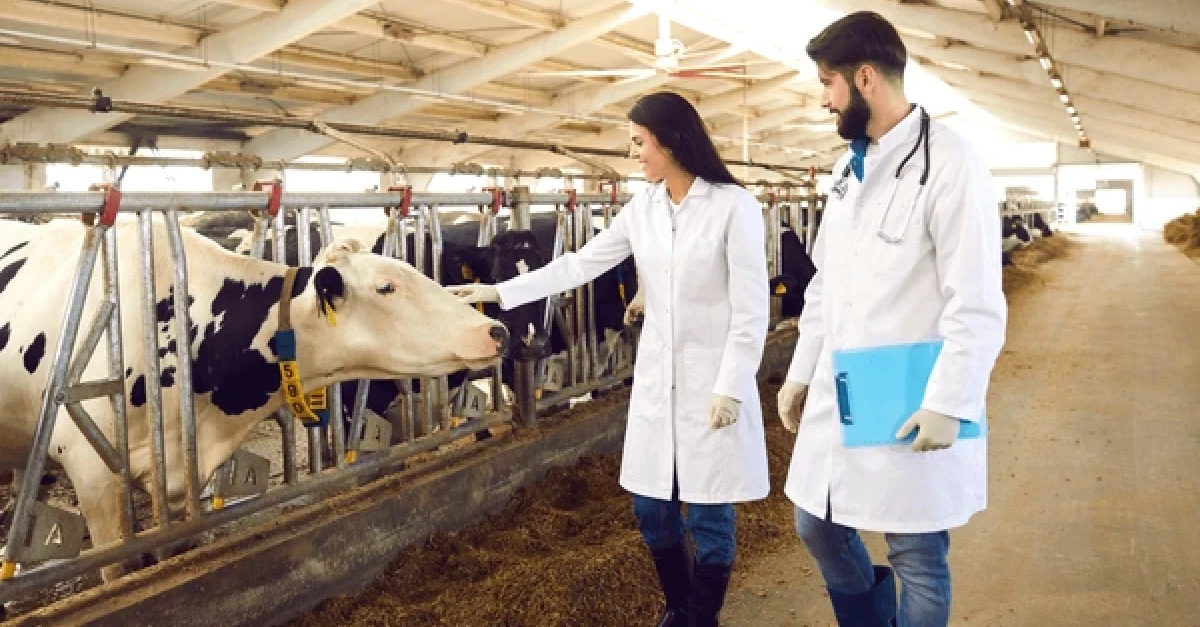
Taking good care of your cattle’s health is crucial for a successful dairy farm. You must focus on the following things-
Vaccinations
Vaccinations are essential. They protect your cattle from various diseases, preventing outbreaks that can affect your entire herd. It’s important to follow a proper vaccination schedule. Consult with a vet to create a plan that includes vaccines for common diseases like foot-and-mouth disease, brucellosis, and rabies.
Let’s go through a brief overview of the Vaccination Schedule, a crucial aspect of the Dairy Farming business plan-
| Disease Type | Animal Type | Vaccine Type | Subcutaneous Dosage | Immunity | Vaccination Time |
| Hemorrhagic Septice (HS) | Cattle & Buffalo | HS | 5ml | 6 months & 1 year | May-June |
| Foot & Mouth Disease (FMD) | All Cloven-footed animals | Polyvalent FMD | 3ml | 1 year | February & December |
| Black Quarter (BQ) | Cattle & Buffalo | BQ | 5 ml | 6 months & 1 year | May-June |
| Theileriosis | Cattle & Calves over age two months | Theileria | 3ml | 1 year | – |
| Anthrax | All animal species | Anthrax Spores | 1ml | 1 year | – |
| Brucella | Female Cattle, Buffalo calf less than age 4 months | Brucella | 2ml | 1 year | – |
| Rabies | All animal species | Rabies post-bite | 1ml | 1 year | Every 90 days |
Routine Checkups
Routine checkups are equally important. Regular checkups help catch any health issues early before they become serious problems. Having a vet visit your farm routinely to examine your cattle ensures they are healthy, eating well, and producing good-quality milk.
Medications
Medications play a vital role in keeping your cattle healthy. They are used to treat illnesses, provide essential nutrients, and prevent issues like accidental abortions. It’s a good idea to keep a stock of necessary medications and supplements on hand. Work with your vet to understand what each cow needs based on its age, health, and milk production.
Artificial Insemination
Artificial insemination is a modern breeding technique that can be very beneficial. It involves collecting sperm from a bull and manually inserting it into a cow’s reproductive tract. This method allows you to breed your cows with the best bulls, improving the genetics and milk production of your herd. You can either learn the process yourself or hire a trained technician to perform it.
11. Waste Management
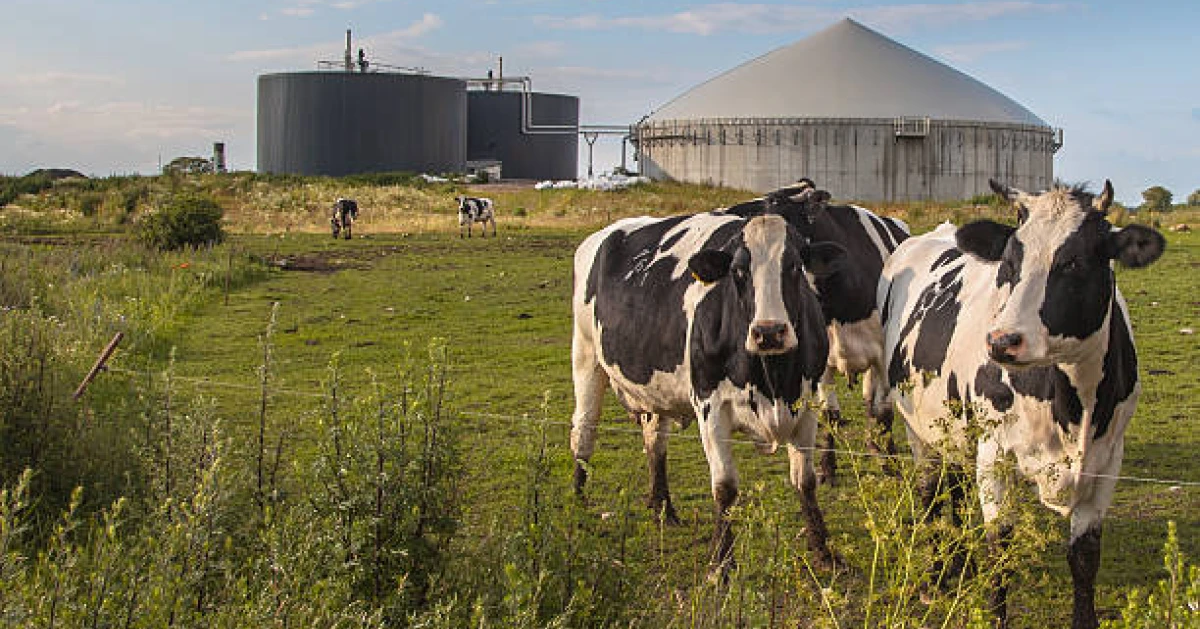
Managing waste properly is essential for maintaining a clean farm and creating useful by-products. You can reuse the cattle waste in the following ways-
- Making Manure: One effective way is by making manure. Manure is animal waste used as fertilizer. It enriches the soil, helping crops grow better. You can collect cow dung and mix it with bedding material and other organic waste, letting it decompose properly before using it on your fields.
- Vermicomposting: Another method is vermicomposting, which involves using worms to turn organic waste into nutrient-rich compost. This process produces high-quality compost that can enhance soil fertility. To do this, set up a vermicomposting bin with worms, cow dung, and organic waste. The worms will break down the material into valuable compost over time.
- Anaerobic digestion: Anaerobic digestion is another option. This process involves microorganisms breaking down organic matter in the absence of oxygen, producing biogas and digestate. It reduces waste and produces biogas, which can be used for energy, and digestate, which is a good fertilizer. You can install an anaerobic digester on your farm and feed it with cow manure and other organic waste to produce biogas and fertilizer.
- Biogas Production: Biogas production is a great way to utilize waste. Biogas is a renewable energy source produced from the anaerobic digestion of organic materials like cow manure. It can be used for heating, electricity, and as a cooking fuel, reducing your energy costs. By using an anaerobic digester to produce biogas from manure, you can capture and store the biogas for use on the farm.
12. Calculation of Profits
Understanding where your profits come from helps you manage your farm better. Here’s a breakdown-
Milk Sales (91%)
The majority of your income will come from milk sales, accounting for about 91% of your profits. This means you should focus on producing high-quality milk to maximize sales and ensure a steady income.
Animal Sales (5%)
Animal sales contribute about 5% to your income. This involves selling cattle, such as older cows or male calves. To maintain a productive farm, you need to manage your herd effectively, selling animals when necessary.
Government Payments (2%)
You might also receive government payments, which account for around 2% of your income. These can be subsidies or payments from the government. It’s important to stay informed about available government programs and apply for any subsidies or grants you qualify for.
Marketing Costs (optional)
If you spend money on marketing, it can impact your profits. Consider whether marketing will help you sell more milk or products. If it will, plan a budget for it.
Other Income Streams (3%)
Finally, income from other sources like biogas production or selling meat also contributes to your profits, accounting for about 3%. Exploring these additional income streams can be beneficial. For example, you can use biogas to save on energy costs or sell surplus meat.
Note: Do you know you can benefit from partnering with reputed milk brands like Amul and Nandini? You can go through the following articles for detailed information-
Starting a dairy farm is a rewarding venture. By choosing the right number of cattle, the best breeds, ensuring proper care, and managing waste effectively, you can build a successful business. Focus on details and stay dedicated. With smart planning and hard work, you’ll not only make a profit but also support a sustainable food supply.
In case you have further questions, just mention them in the comments section below!

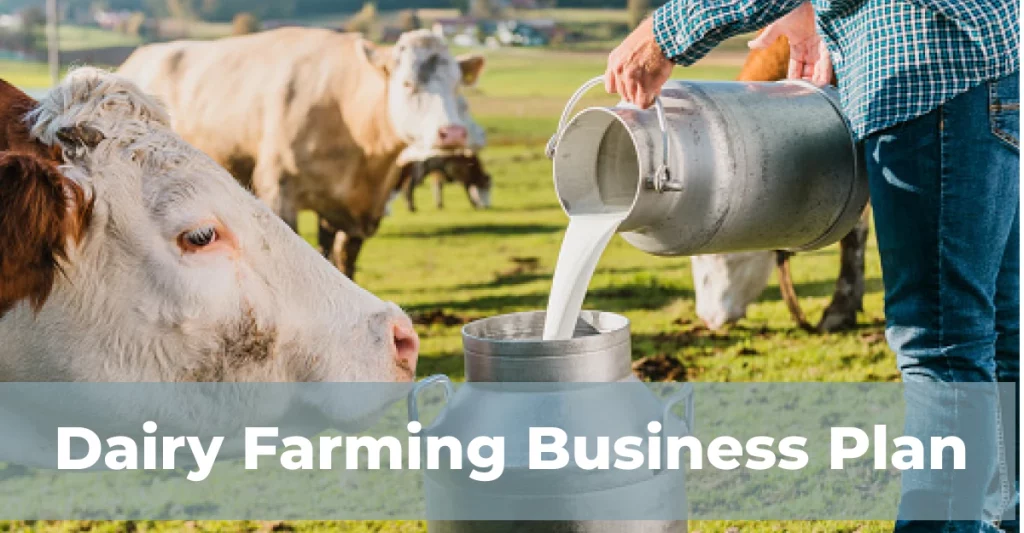
Yeah dairy farming is one of profitable business to do however it comes with great responsibility too and requires proper management!